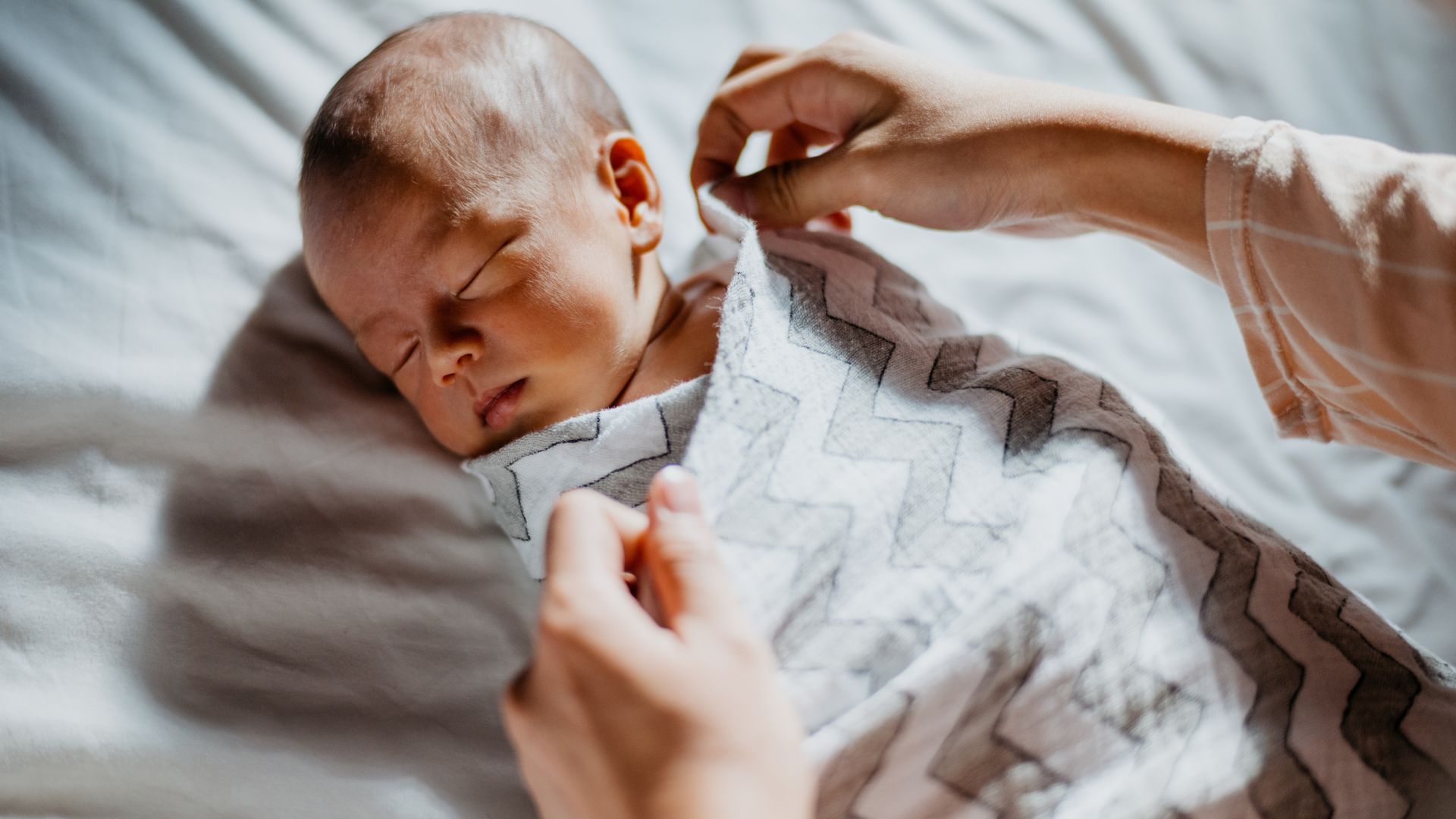Should I swaddle my baby? - I'm a baby sleep expert and here's what I know
Swaddling has been used for generations, but does that make it right for you?


Swaddling is one of those things that new parents might not be sure of but their parents are quick to suggest.
But, as with all things, more research is done and more people look deeper into parenting practices from yesteryear to see if what was always done, should continue. I'm a baby sleep expert and strive to always share thorough and factually correct information so that you, as parents, can make the right choice for your family. So if swaddling is what you're interested in learning more about, take a look at our best swaddles (all reviewed by parents for parents) and then keep reading.
Swaddling is a practice that has been around for centuries so may people wondering how to swaddle a baby are usually shown by an older member of their family. In ancient times it was thought to help infants' limbs grow straight and prevent deformity. Just like other infant care trends, swaddling has fallen in and out of favor throughout the years. Today swaddling is something experts struggle to agree on, some will argue that it should be standard practice whilst others argue it isn’t safe.
Should I swaddle my baby?
This decision is yours to make. Many parents wonder if there is a special swaddling product or blanket to use, as a rule no not really. There are various swaddle products on the market, for example, swaddle blankets, swaddle sacks, and sleep bags. The American Academy of Pediatrics (AAP) advises swaddling should only be considered for a newborn, and baby sleep safety charity, The Lullaby Trust does not comment on their safety but advises parents to ensure that the products meet necessary safety standards. If you do use a swaddling product, follow their guidance on usage. Some swaddle manufacturers recommend their product be used when a baby is a certain weight, rather than age.

Important to note: When using a swaddle product, they should be well fitted. If you choose to swaddle using a blanket, use materials such as a thin muslin or thin cotton sheet. It is very important that you don’t use blankets or place any additional bedding over a swaddled baby as this could cause them to overheat. Ideally you should look to stop swaddling around 4 months. This it the age that baby's end to roll over and they could roll onto their tummy/face and get stuck.
Below are my pros and cons you need to know about before deciding whether to swaddle your baby.
Pros and cons of swaddling
Pros of swaddling:
Parenting advice, hot topics, best buys and family finance tips delivered straight to your inbox.
- Some babies are really calmed or soothed by being wrapped in a swaddle.
- Research has found that it can be particularly helpful for babies with neurological problems or colic, or for babies born addicted to drugs (McCarthy, 2020).
- Swaddling can promote deeper, longer stretches of sleep.
- Swaddling provides proprioceptive input. Proprioception is the way that our joints and body receive inputs, such as pressure. The swaddle enables babies to feel proprioceptive inputs in their joints that they also felt in the womb.
Cons of swaddling:
- Swaddling during the day for extended amounts of time can limit a baby’s mobility which is important for development.
- Swaddling can increase your baby’s risk for Sudden Infant Death Syndrome (SIDS). This is because the swaddle can become loose and cover a baby’s face. This could lead to restricted breathing or overheating.
- Tight traditional swaddles are strongly associated with developmental dysplasia of the hip.
- Being swaddled doesn’t allow a baby to bring their hands to their mouth. This can be very difficult for babies because the most natural self-soothing mechanism is to suck on their hands and fingers.
- Breastfed babies need their hands free to help orient themselves to the breast so during feeding it is advised that babies are unswaddled. This means unswaddling and re-swaddling at every night feed.
- All babies will have to stop being swaddled. It is recommended swaddling stops as soon as a baby shows signs of rolling. This transition can be challenging, especially if the swaddle has become the primary tool for comfort.
- Swaddles can promote deeper sleep by inhibiting a baby's Moro Reflex, AKA the 'Startle' reflex. This reflex is a protective mechanism that startles a baby awake in order to help the baby reach out for their mother, grab onto her and bring her close. This can be a frustrating phase but knowing that it is there to keep your baby safe means we should consider whether we want to inhibit this mechanism or not. The reflex usually integrates between 4-6 months. The more time your baby has free unrestricted movement, the more they will become used to it and the less the reflex will wake them up.
When should I not swaddle my baby?
When your baby feeds it is important that you take them out of the swaddle. This will avoid them getting overly hot and allow them to use their hands for feeding. If you bedshare it is advised that you don’t swaddle your baby because they could overheat. You shouldn’t swaddle your baby if they are unwell with an infection or fever as again they could overheat . It is also not recommended that you swaddle your baby if they don’t like to be swaddled.
Conclusion
As you can see there are many considerations when thinking about whether to swaddle your baby or not. Sometimes the decision is taken out of your hands. Not all babies find swaddling soothing. Some babies hate being wrapped up. Although many claim that being swaddled is like being in the womb, this is not actually true babies in the womb have their hands and arms free which is why many like to continue to have this freedom of movement.
The main thing to remember, as a parent that when it comes to creating strong foundations for sleep, you can’t go wrong if you stick to your instincts and do what feels right for you and your baby.
Related features:
- How to get a baby to sleep
- Sleep regression ages - what are they and how long do they last?
- 4 month sleep regression - signs solutions and how long it lasts
Video of the Week:

Sarah has a PGCE in Primary Education, a BSC in Cognitive Science, and an MA in Education as well as being a certified sleep consultant for babies and young children. Sarah is passionate about empowering and supporting parents to get more sleep without leaving little ones to cry themselves to sleep.